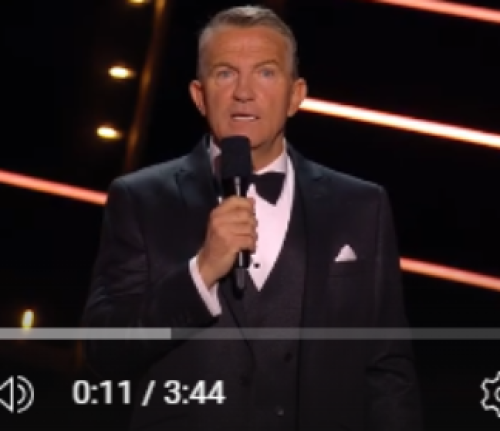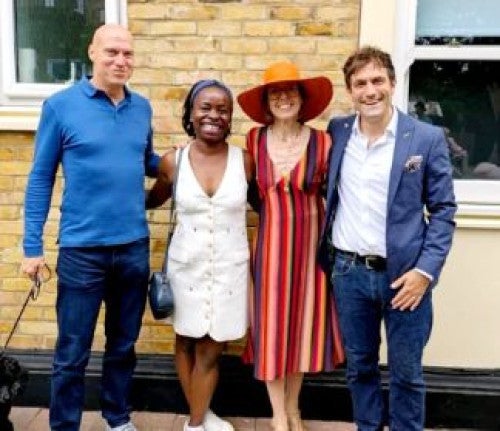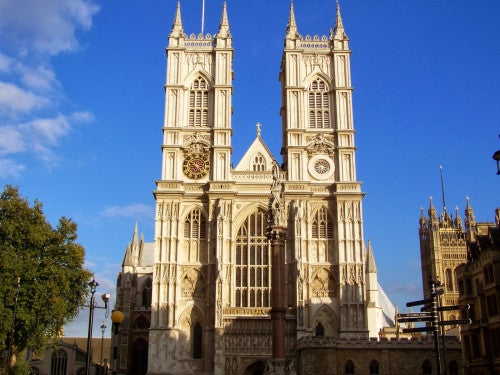History of the Charity
-
1907
-
On December 4th 1907, The Music Hall Artistes’ Railway Association (MHARA), who offered reduced fares and other benefits to its members, proposed at its General Meeting, that a levy of one shilling be introduced with its annual subscription, to be used to begin a benevolent fund for the benefit of its members and fellow artistes.
This nucleus of funds was to be supported by many other sources including voluntary contributions, odd charity matinees, the proceeds of the Annual Dinner, and from collections on passenger liners to and from the USA, South Africa, and Australia by artistes travelling to and from engagements. Thus relief to performers from hardship, or ill health, could be available in many ways, including weekly pensions, grants, loans, funeral expenses, and finally for admittance to a Home for entertainers, who through old age, were unable to continue to earn from their livelihood.
This was the original conception put forward by Joe O'Gorman, but the idea of a Home for old performers, of both sexes, was also suggested by Joe Elvin of the Grand Order of Water Rats, in 1908. He had promised personal friends financial assistance if the scheme was approved by the profession. This was publicised in the professional papers of the day, and at the annual dinner of the MHARA, the idea was received with great enthusiasm and a considerable sum of money was immediately pledged. Shortly after, a committee was formed comprising of delegates from all the professional entertainment societies and various projects were devised in order to raise the additional finances required for the project.
At a General Meeting of artistes held at the Old Empire, Camberwell, the details of the project were unveiled and additional monies subscribed, until nearly £2,000 was raised. Architects’ plans were acquired for a proposed building and the estimated costs were set at £7,000, a huge sum of money in 1908. Joe Elvin generously promised to donate £500 for the purchase of some land, and a fête was held the following July, but owing to terrible weather conditions, the fund raising event made a considerable loss. Further unforeseen circumstances caused a lack of interest and enthusiasm, and Committee meetings were abandoned for a couple of years.
-
1911
-
In March 1911, it occurred to the then Secretary of the MHARA, that it would be most unfortunate if £1,700 lay dormant at the bank, with little being done to set the scheme in motion and to carry out its original intentions. A Committee meeting was called and Joe Elvin was invited to attend. At the meeting, it was put forward that instead of building a new home, the money be used to purchase a property suitable for the intended purpose, within easy reach of Central London, and available for the reception of former artistes.
Joe Elvin promptly agreed and the Committee endeavoured to find such a property. After looking at several houses that were unsuitable, particulars of a freehold mansion, with five acres of land, near Twickenham in Middlesex, emerged. The property appeared ideal and Joe Elvin was asked to view the house; he was delighted with what he saw. Negotiations started without delay and in August 1911, the property was purchased for £2,400, £1,000 paid in cash from the Fund's reserves and the remaining borrowed in the form of a mortgage. An enthusiastic Committee commenced preparations for the house's occupation. It was apparent that extensive alterations would be needed, including the installation of a new drainage system; the work was carried out at a cost of £500. The question of furnishing the House, estimated at £280, also needed to be considered, and the amount was promptly raised by a special 'Sixpenny Fund', organised by ‘The Performer’ newspaper. All this work was completed within two months and the house was ready by November, 1911.
A reception was held at Brinsworth House attended by a number of leading journalists and numerous members of the entertainment profession. Joe Elvin, the founder, put forward a scheme suggested by W.H. McCarthy, also a Member of the Grand Order of Water Rats, that the Order establish a Society to be known as the ‘Noble Six Hundred’, which would consist of artistes and friends of the profession, each of whom would make a donation of £2.10.0 (£2.50) to raise the £1,400 required to pay off the Home's mortgage. By the following April, the entire amount had been obtained and the mansion and land became the sole, freehold property of the Music Hall profession. A board was erected within the entrance hall of the Home, with the names of all of the ‘Noble Six Hundred’ inscribed; it still hangs there to this day.
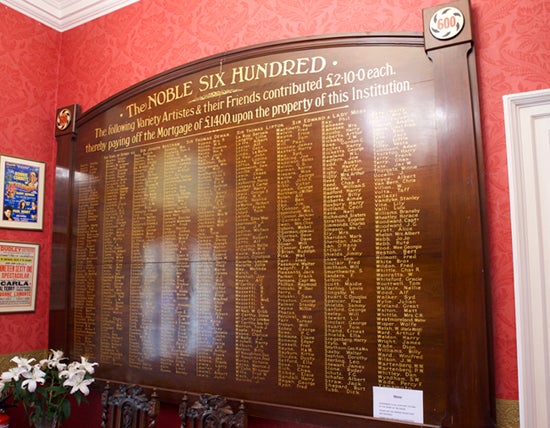
'The Noble Board' within Brinsworth House, detailing the names of the 'Noble 600' who each contributed £2.10.0 in 1912 to buy Brinsworth House for the entertainment profession
-
1912
-
A reception was held at Brinsworth House attended by a number of leading journalists and numerous members of the entertainment profession. Joe Elvin, the founder, put forward a scheme suggested by W.H. McCarthy, also a Member of the Grand Order of Water Rats, that the Order establish a Society to be known as the ‘Noble Six Hundred’, which would consist of artistes and friends of the profession, each of whom would make a donation of £2.10.0 (£2.50) to raise the £1,400 required to pay off the Home's mortgage. By the following April, the entire amount had been obtained and the mansion and land became the sole, freehold property of the Music Hall profession. A board was erected within the entrance hall of the Home, with the names of all of the ‘Noble Six Hundred’ inscribed; it still hangs there to this day.
During the early part of 1912, the Benevolent Fund took over the Music Hall home at Gypsy Hill, where around 12 former artistes were in residence and it was decided shortly thereafter to house all these residents, under just one roof, at Brinsworth House, and it was therefore proposed that an extension to Brinsworth House be built.
His Majesty King George V, and Her Majesty Queen Mary, agreed to attend a 'Royal Command Performance' at London's Palace Theatre in July 1912, in support of the proposed plans and to raise the required funds to build the extension. Frank Matcham, the eminent architect who had designed many of the leading Theatres and Music Halls of the era, generously consented to prepare the plans for the erection of the New Wing free of charge. The work commenced in June, and was completed by October. This first Royal Variety Performance, was a lavish occasion, and the theatre was decorated with 3 million roses draped around the auditorium and over the boxes.
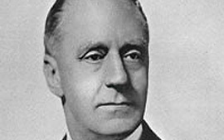
Sir Harry Marlow, Chairman 1908-1946
-
1919
-
His Majesty attended a further Royal Command Performance in 1919 to thank the variety profession for their tremendous efforts during the Great War, and then in 1921, Harold Bishop, Secretary of the VABF, organised the first in a long line of Royal Variety Performances, and His Majesty King George V agreed to become Patron of the Fund in the same year.
His Majesty King George V, decreed that the Monarch, or a senior member of the British Royal Family, would attend an annual performance in aid of Brinsworth House and the Benevolent Fund, once a year thereafter.
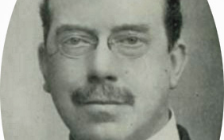
Sir Edward Stoll, Vice-Chairman & Executive Producer 1912-1926
-
1921
-
King George V and Queen Mary attended the first 'royal shows' in 1912 and 1919, becoming Patrons of the Royal Variety Charity from 1921. Life-Patronage from the reigning monarch continues to the present day, demonstrating the Royal Family's long support & affection for the entertainment industry
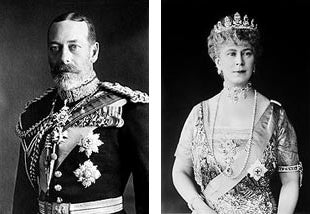
King George V and Queen Mary attended the first 'royal shows' in 1912 and 1919, becoming Patrons of the Royal Variety Charity from 1921. Life-Patronage from the reigning monarch continues to the present day, demonstrating the Royal Family's long support & affection for the entertainment industry
-
1936
-
In 1936 His Majesty King George VI and Her Majesty Queen Elizabeth (The Queen Mother) become joint Patrons of the charity
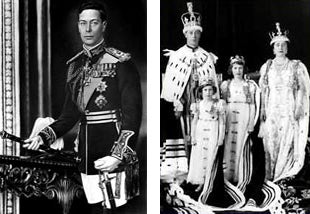
In 1936, His Majesty King George VI and Her Majesty Queen Elizabeth (The Queen Mother) become joint Patrons of the charity
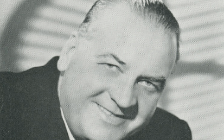
Sir Arthur Scott CBE, Chairman 1942- 1954
-
1956
-
In 1956, Arthur Scott took over from Harold Bishop as Secretary of the Fund, who had been in post for 37 years! Arthur Scott took over as Secretary and took over the responsible task of organising the annual show. The annual Royal Variety Performance has been the financial bedrock of the Fund ever since, and now forms a major part of the entertainment industry's calendar with over 150 million viewers worldwide.
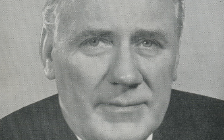
Val Parnell CBE, Life-Governor & Executive Producer 1940's & 1950's
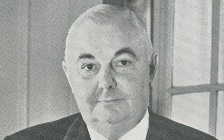
Sir Prince Littler CBE, Chairman/ Exec Producer 1950's
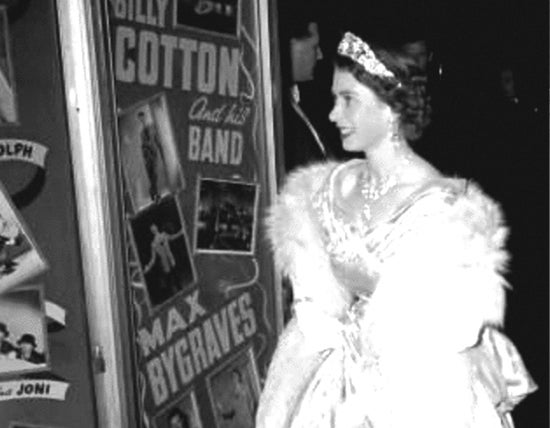
In 1952, HM The Queen becomes Patron of the Royal Variety Charity and is pictured here attending the Royal Variety Performance in 1952 at the London Palladium
-
1972
-
Two new wings were added to Brinsworth House in the 1970's, the nursing wing in 1972, named after Leslie Grade who was responsible for its funding and construction and the extended back wing in 1976. Brinsworth House was honoured on both occasions by the presence of one of its most ardent patrons, the late HM Queen Elizabeth, the Queen Mother, who performed both opening ceremonies.
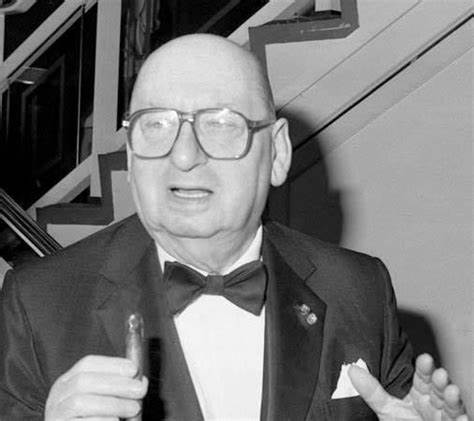
-
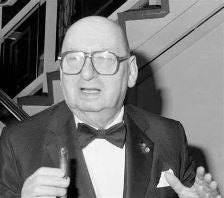
Two new wings were added to Brinsworth House in the 1970's, the nursing wing in 1972, named after Leslie Grade who was responsible for its funding and construction and the extended rear wing in 1976. Brinsworth House was honoured on both occasions by the presence of one of its most ardent patrons, the late HM Queen Elizabeth, the Queen Mother, who performed both opening ceremonies.
-
1974
-
1974 marked an important year for the Fund; the Variety Artistes' Benevolent Fund (the VABF), changed its name to the Entertainment Artistes' Benevolent Fund, marking its help for a wider spectrum of show business.
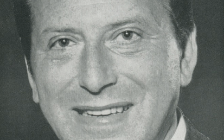
Lord Bernard Delfont CBE, Chairman & Executive Producer 1960's & then Life-President 1970-1994
However, the Home is only part of the work of the charity and we continue to devote further resources to helping entertainers, from all branches of the industry that still live in their own homes, but have for whatever reason fallen upon hard times, or ill health, and just need a little financial assistance or advice.
In an industry where professional artistes are asked to use their many talents to help with fund-raising for other charitable organisations outside of their profession, it should never be forgotten that there are considerable demands within the profession itself, to help past performers who through age, illness, or ill fortune, look to their fellow artistes for assistance.
-
2007
-

Executive Committee Member and former Chairman, Roger Kitter, forged a deal with Syco Televison's Simon Cowell and his then manager, Max Clifford, arranging that the Royal Variety Charity would have a share of the telephone voting income in return for a 3 minute slot on the Royal Variety Show.
The first series aired in 2007 with Welsh Singer, Paul Potts securing first place and earning his slot on the Royal Variety Performance at the Liverpool Empire, held in the presence of Her Majesty The Queen and His Royal Highness The Duke of Edinburgh.
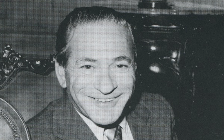
Sir Louis Benjamin CBE, Life-Governor and Executive Producer 1979-1985
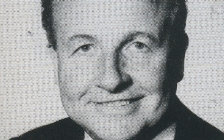
Peter Prichard OBE, Executive Committee Member, Chairman 1995-2009, then a Life-Governor
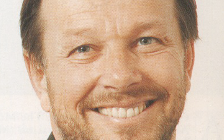
Laurie Mansfield, Chairman 1989-1994, Executive Producer, Life-President 1995 - present
-
2015
-
On 26 June 2015, the Executive Committee of the EABF met for an historic Annual General Meeting. Chairman Giles Cooper had previously gained approval from the Deputy Prime Minister's Office to change the name of the charity from the EABF to the Royal Variety Charity and Buckingham Palace and the Cabinet Office followed by awarding the charity the honour of official use of the title 'Royal' within the charity's name. The Executive Committee subsequently officially voted to adopt the change of name of the charity with immediate effect.
Members of the Management Body present at this historic vote included (alphabetical order): WYN CALVIN MBE, PAT CHURCH, GILES COOPER, DEE-DEE CROSHER, PHIL DALE, KENNY EARLE, JOY FRANCOIS, IAN FREEMAN, CHERYL GARLAND, VALERIE GARLAND, FAWN JAMES, KEITH LASELLES, JOHN LOGAN, LAURIE MANSFIELD, VICKI MICHELLE MBE, GEORGE MURANYI, GORDON PETERS, BABS POWELL, REV. CANON ROGER ROYLE, KEITH SIMMONS, NICK THOMAS, PETER TOD and were accompanied by Charity Finance Director NILESH RUPAREL, Matron TATREE PREECE, PA to Chairman CATHRYN TOMLINSON and HaysMacIntyre auditor BERNIE WATSON.
Chairman of the Royal Variety, Giles Cooper, issued the following statement, to mark the historic occasion:-
Chairman's Statement: Friday 26th June
“This is an historic day in the 107 year history of our charity; the oldest and most well known of all charities in show business. In recent years, the Entertainment Artistes’ Benevolent Fund (EABF) has become better known, through television shows such as Britain’s Got Talent, as the Royal Variety Charity and today’s official name change marks a landmark occasion for us and the beginning of a new era.
The entertainment industry is constantly evolving and similarly the needs of those who need support in our business has changed and altered dramatically since our foundation. It is therefore so important that a thriving charity such as ours also evolves and develops at a pace in tandem with the modern era. I am delighted to announce that the Royal Variety Charity will be widening its criteria of help to all those who have served the entertainment industries, both young and old; to all those who have worked in front of a camera, or behind it, on the stage, or in the wings, as well as all those who have spent their lives working in the numerous support industries dedicated to entertainment. We will not only be offering support to those who have found themselves struggling as a result of ill health, financial hardship or old age, but to the dependants of all those who have spent their lives serving the industry.Our annual fundraiser, the Royal Variety Performance, is enjoying a huge resurgence in popularity in the UK and throughout the world and I would like to thank our sole Patron, Her Majesty The Queen, and indeed all of the Royal family and their staff for the continued support of our charity and annual show.
This year’s Royal Variety Performance will be held at the Royal Albert Hall on Friday 13th November in the presence of senior members of the Royal family and our full line-up of artists will be announced in the Autumn. We once again look forward to working with our friends at ITV Studios in producing another spectacular night of entertainment from around the world.”
Giles Cooper - Chairman, Royal Variety Charity
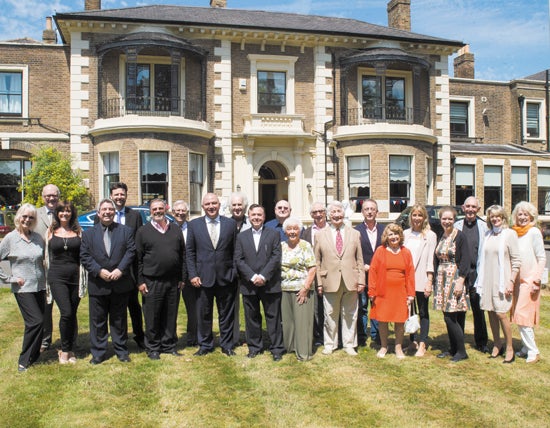
Members of the Executive Committee present at the historic AGM on 26th June 2015, following the vote to change the name of the charity from EABF to Royal Variety Charity
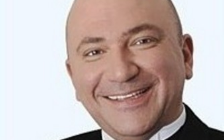
Giles Cooper OBE, Chairman & Executive Producer, 2010 - present
-
2020 - 2024 Refurbishment of Brinsworth House
-
Refurbishment of Brinsworth House
In 2012, Chairman of the Royal Variety Charity began a campaign to refurbish Brinsworth House, the charity’s care home for elderly entertaimers. It was an enormous task – most of the bedrooms were without ensuite bathrooms, there was limited access to the higher floors (with just one staff lift) and generally the whole home needed upgrading with tech and facilities.
Giles Cooper recalls “to start with it was difficult to persuade my fellow colleagues on the management body to proceed with my vision. Quite rightly, they were concerned about whether we could afford it, but most importantly, were worried about where would we house our many residents duing the works. In time, however, everyone realised that without improving our facilites it wouldn’t be long before this old building would, in a few years, be no longer fit for purpose”.
Tenders were soon placed for architects and structural engineers and within a couple of years, the plans for the complete refurbishment of Brinsworth House, were agreed. Project Managers and contsruction companies were then sourced to quote on the work, which had been developed into several distinct phases to ensure the minimum disruption to staff and residents. The task was further compklciated by the fact that the old Georgian mansion was Grade 2 Listed and numerous meetings and approvals were required by County Planning officials, together with Officers from Historic England.
Work begain in earnest in 2020 and, ironically, the Covid pandemic assisted its progress. The Home was naturally closed to visitors and our policy of not admitting any new resdients to the home during the pandemic, meant that whole areas could be cordoned off from residents, allowing the builders to get on with their work separately to the home’s operation.
The brand-new kitchen, fitted with the latest high-tech equipment, together with a complete refurbishment of what was quite a dark and dingy dining room, was completed in December 2021.
Our new wing, complete with 16 ensuite bedrooms, each fitted with fibre connected broadband and digital screens is a site to behold – it really is like a boutique 5-star hotel!
Giles Cooper commented “I’m so delighted that this multi-million-pound project is nearing completion. It really will make an enormous difference to the quality of life for our many residents (and staff!). It also future proofs the ‘entertainment industry’s care home’ for the next 100 years and I’d like to thank all those who’ve assisted us with the fundraising and logistics of making this possible. We can all be so proud of our achievement, which many said would be impossible.”
In 2023, the Executive Committee of the Royal Variety Charity named the new wing, 'The Giles Cooper Wing' - in recognition of his vision and leadership of Brinsworth House's huge refurbishment project.
Work on the upper floor bedrooms of the original old building, together with the Hair Salon, TV Lounge, Main Lounge and stage were completed in early 2024.
